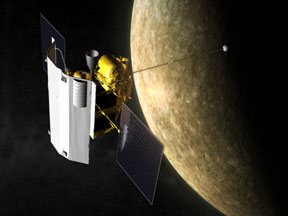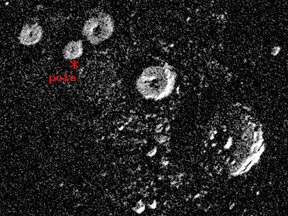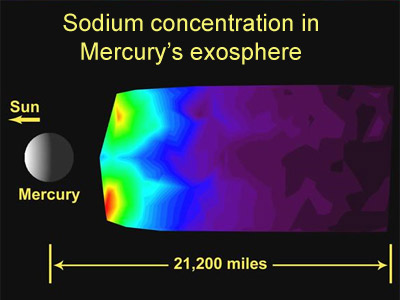Missions to Mercury
Mission |
Country |
Launch Date |
Arrival Date |
Type |
Encounter
Characteristics |
MESSENGER
(MErcury Surface,
Space ENvironment,
GEochemistry, and Ranging) |
USA |
August 2004 |
March 2011 |
Flybys and Orbit |
Will study Mercury from orbit for one year |
|
USA |
November 3, 1973 |
March 29, 1974 |
Flyby |
10,000 images covering 57% of the planet
Currently in Solar Orbit |
 An Overview of Space Exploration
An Overview of Space Exploration
You might also be interested in:

A new spacecraft is going to the planet Mercury. The spacecraft is called MESSENGER. MESSENGER is only the second spacecraft ever to visit Mercury! MESSENGER will blast off in August 2004. It will get
...more
Most planets are tilted. Their North and South Poles are not straight up and down. Earth is tilted a medium amount. Uranus is tilted a lot. Mercury is hardly tilted at all. It is tilted less than any other
...more
Mercury has a magnetic field. Its field is weak. Earth's magnetic field is tilted. So is Mercury's. That means Mercury's magnetic poles are not in the same place as its geographic poles. Mercury has a
...more
Mercury has almost no atmosphere. The planet's small size means that its gravity is too weak to hold down a normal atmosphere. There is a very thin atmosphere around the planet. Mercury's thin atmosphere
...more
Mercury is the only inner planet other than the Earth that has a significant magnetic field (220 nT). This field, along with the planet's high density and small size relative to the Earth, indicates that
...more
 An Overview of Space Exploration
An Overview of Space Exploration










